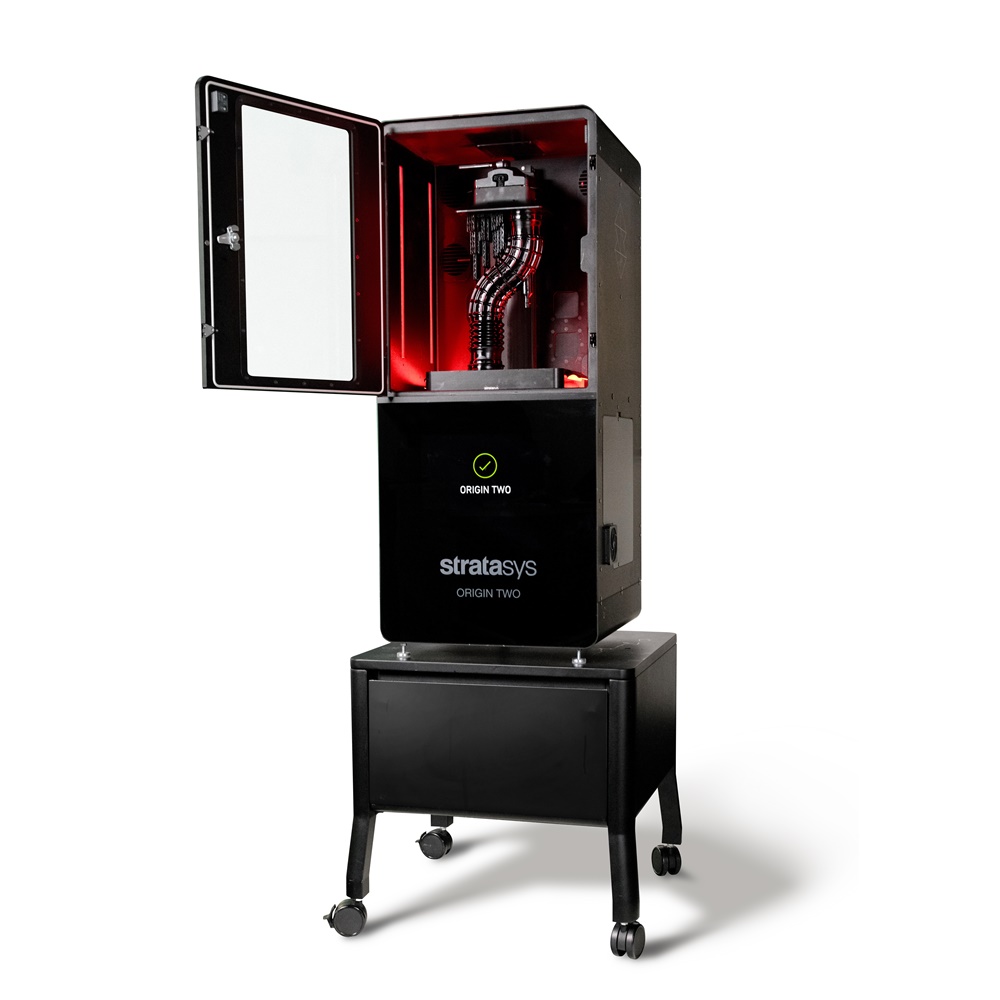Stratasys has launched the Origin Two DLP 3D printer and its Origin Cure post-processing solution to meet the growing demand for high-quality, small-batch production. Designed to deliver the precision, repeatability and surface finish associated with traditional injection molding, this new system marks a major advancement in additive manufacturing.


Stratasys launches Origin Two DLP 3D printer with post-processing system
Stratasys Origin Two DLP 3D Printer (Image source: Stratasys)
Solving the Challenges of Low-Volume Production
Traditional high-volume manufacturing faces increasing challenges due to supply chain disruptions, material shortages and changing consumer preferences. Manufacturers are increasingly looking for low-volume production solutions to reduce costs associated with mass production. Origin Two is designed to eliminate the high setup and tooling expenses typically incurred in low to mid-volume production, while meeting stringent accuracy requirements.
Post-processing equipment


Stratasys Origin Cure post-processing equipment (Image source: Stratasys)
By combining Origin Two with Origin Cure, manufacturers can benefit from:
Ensure quality control to meet strict part requirements
In-house production to reduce dependence on third-party suppliers
Improve inventory management with on-demand parts delivery
Simplified single-process manufacturing approach for improved consistency
Rani Hagag, director of medical and consumer affairs at Stratasys, highlighted the growing role of additive manufacturing. “With the new Origin solution, manufacturers of parts requiring low volumes and high precision now have an alternative to high-volume production that can meet their most stringent requirements, which was not previously possible with additive manufacturing. »
Main features of the Origin Two and Origin Cure systems
Origin Two and Origin Cure solutions deliver high accuracy, repeatability and performance. It achieves an accuracy of +/- 50 µm, which is essential for industries such as aerospace, automotive and electronics. The system achieves over 93% repeatability within this tolerance range across multiple printers, with a surface finish of RA 3 µm.
Other features include:
Print speed of up to 20mm/hour enables rapid production
Heating chamber supports materials with a thermal deflection temperature (HDT) up to 300°C for high-performance applications
Compatible with a variety of high-performance resins and formulations thanks to its 385nm wavelength
Ryan Martin, senior research director at ABI Research, noted that additive manufacturing is increasingly valuable in low-volume production. “Manufacturers are using 3D printing for low-volume production of custom parts, which helps shorten lead times and reduce waste. This provides greater flexibility and cost efficiency, supporting on-demand prototyping and production. »
Daguang focuses on providing solutions such as precision CNC machining services (3-axis, 4-axis, 5-axis machining), CNC milling, 3D printing and rapid prototyping services.

















